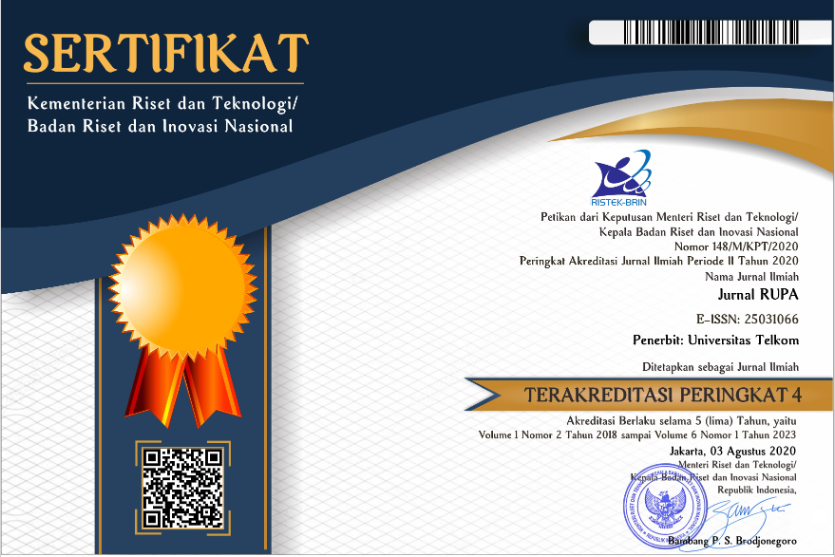Harmoni dan Narasi Kosmos
Abstract
For all his life Johannes Kepler seeking for harmony. Kepler is best known for his laws of planetary movement. He is also a polymath working in the intersection between contemporary sciences such as astronomy, math, physics, optics, astrology, music theory, meteorology dan history. After spending years exploring those different disciplines, he later learned he was actually longing for the harmony. His fascination over harmony in nature kept growing up, in his last days Kepler was still trying to finish a book he started since he was still a scholar. This book is called Somnium. Somnium itself is the Latin word for 'dream,' a word that make sense if you read the whole chapter. The main idea for this project is Kepler’s fascination over the harmony in celestial object, thus he tried to convince people that Copernicus heliocentrism is the absolute truest way to understand how our solar system works. The idea of making narative came up to Kepler’s mind as he turned his research into a fiction, a story about a boy who makes his journey to the moon to help his mother for being accused of being a witch. Similiarly to the boy, Kepler’s mother is also accused for witchcraft. So Somnium was not really just a scientific book but in some part of them, there is also some biographical facts and fiction. By knowing the pattern in nature we can understand that the nature is in order and there is a grand design hidden in layers. Just like Kepler that are fascinated by the order of nature, 'Somnium' in this work is also talks about the pattern and harmony the curiousity for nature that represented in geometrical objet and natural study, and also about the old knowledge where science, art and spirituality is learnt through one form knowledge








